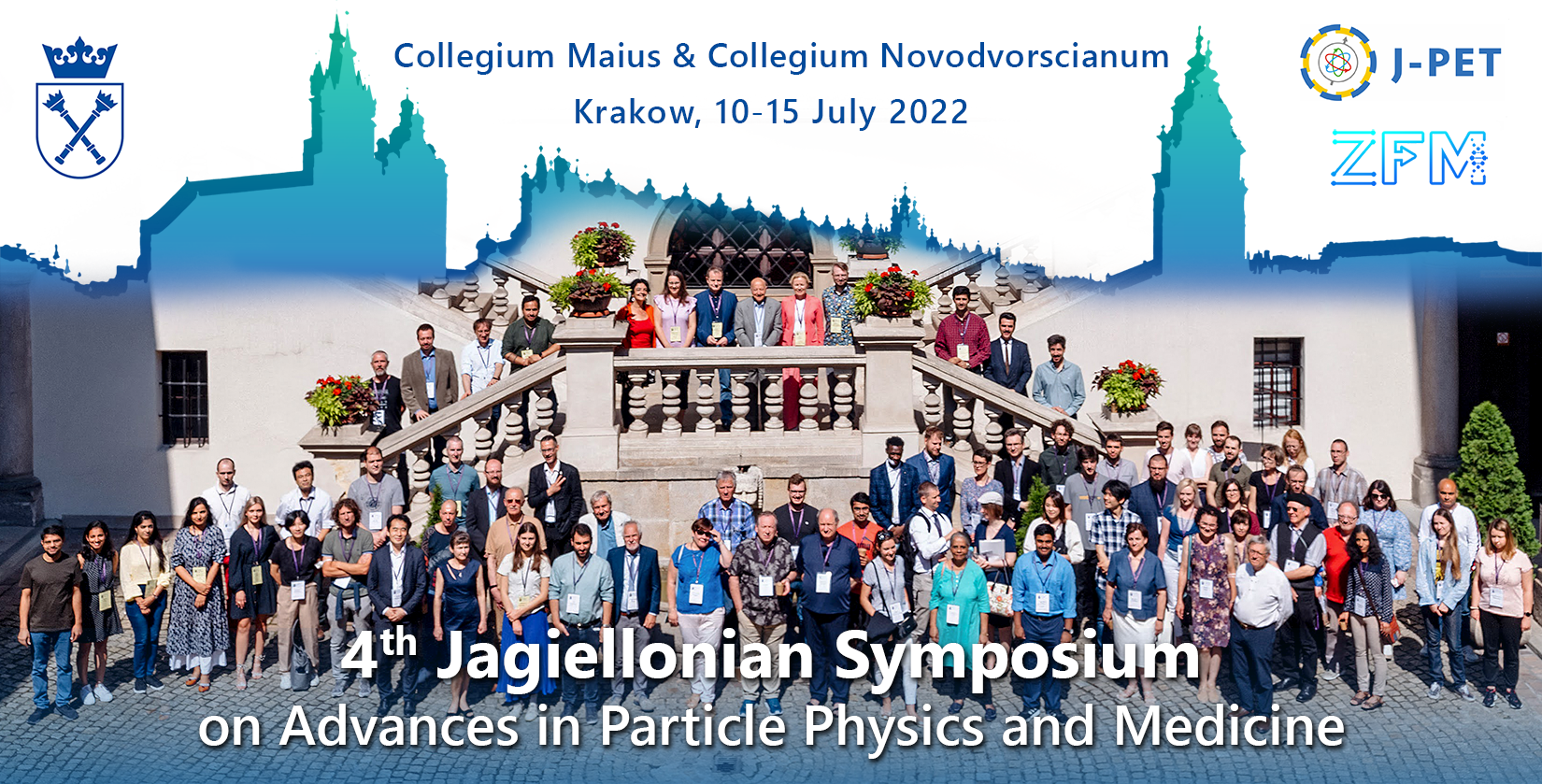Speaker
Description
Ł. Kapłon 1, 2, 3, on behalf of the J-PET Collaboration
1 Faculty of Physics, Astronomy and Applied Computer Science, Jagiellonian University, Krakow, Poland
2 Total-Body Jagiellonian-PET Laboratory, Jagiellonian University, Krakow, Poland
3 Center for Theranostics, Jagiellonian University, Krakow, Poland
Corresponding author: lukasz.kaplon@uj.edu.pl
Plastic scintillators are used in many applications connected with advanced medical devices, for example in novel multiphoton J-PET scanners with positronium imaging capability [1, 2], and in plastic scintillation dosimetry [3].
In the first part of the lecture, results from measurements of transparency of commercially available plastic scintillators will be presented [4]. Purpose of the research is to select the best type of scintillator for the total-body J-PET scanner construction. Emission spectra, transmission spectra and technical attenuation length (TAL) values of six types of plastic scintillators with dimensions 6 mm × 24 mm × 1000 mm will be discussed. General purpose, blue-emitting plastic scintillators with low attenuation of visible light were tested: polyvinyl toluene-based BC-408, EJ-200, RP-408 and polystyrene-based Epic, SP32 and UPS-923A. The emission spectra of the investigated scintillators have maxima ranging from 420 nm to 429 nm. The BC-408 and EJ-200 scintillators have the highest transmittance values of about 90% at the maximum emission wavelength (measured through a 6 mm thick scintillator) and the highest TAL values up to about 200 cm, allowing building of long modules for total-body J-PET scanner.
In the second part of the talk, results from the research of blue- and green-emitting polystyrene-based plastic scintillators for scintillation dosimetry applications will be presented [5]. Anthracene, coumarin and perylene fluorescent dyes were used as wavelength shifters [6]. Emission maxima of manufactured green-emitting polystyrene scintillators are in range from 484 to 525 nm. The concentrations of the BPBD ultraviolet dye and Solvent Green 5 green fluorescent dye, influence the light output, rise and fall times, and the emission spectra of the scintillator samples.
References:
[1] P. Moskal, E. Stępień, PET Clinics 15 (2020) 439-452
[2] P. Moskal et al., Science Advances 7 (2021) eabh4394
[3] S. Beddar et al., 12th chapter in: M. Hamel (Ed.), Plastic Scintillators. Springer 2021
[4] Ł. Kapłon, IEEE Transactions on Nuclear Science 67 (2020) 2286-2289
[5] Ł. Kapłon, G. Moskal, Bio-Algorithms and Med-Systems 17 (2021) 191–197
[6] Ł. Kapłon, G. Moskal, Submitted to Optical Materials: X (2022).
This work was supported by grant for the early stage of research financing from Centre for Technology Transfer CITTRU from the Jagiellonian University in 2021; the Priority Research Area DigiWorld under the program Excellence Initiative Research University at the Jagiellonian University in 2021; the National Science Centre of Poland through grant OPUS No. 2019/35/B/ST2/03562, and the Jagiellonian University under project No. CRP/0641.221.2020. The authors acknowledge support by the TEAM POIR.04.04.00-00-4204/17 program, the National Science Center grant no. 2021/42/A/ST2/00423 and the SciMat and qLife Priority Research Areas budget under the program Excellence Initiative - Research University at the Jagiellonian University.

